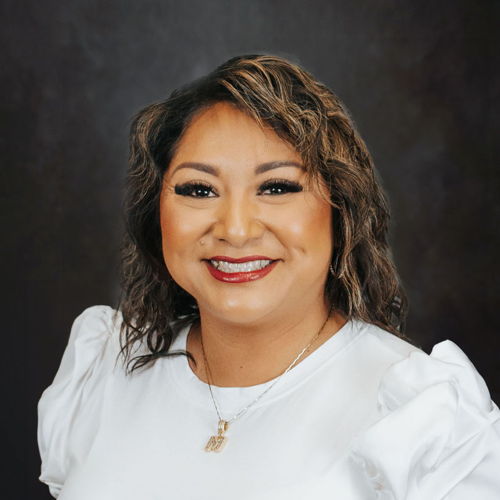Career Reinvention, It's Never Too Late
Making the Most of Your 50s, 60s, and beyond!

“It’s never too late to be what you might have been.” — Motivational speaker Les Brown
The Creative Advantage specializes in creating career documents for “The Over 50 Job Seeker.”
The concept of the traditional career path has changes. There are more than 108M people who are now age 50 or older, and one in five Americans will be 65 or older by 2030. The idea of an upwards career path culminating in retirement at age 65 or 67 is evolving to “second act” and even “third act” careers. Moving into a new career at midlife is becoming more common.
Think about these successful midlife career changers …
- Colonel Sanders (Kentucky Fried Chicken) held many jobs: farmer, fireman, insurance salesman, and streetcar conductor before operating a Kentucky service station at age 40, where he also sold fried chicken. His chicken became famous, and so did he! Sanders sold his first KFC franchise in 1952, at the age of 62.
- Ray Kroc was 50 when he met Dick and Mac McDonald and convinced them to franchise their local, self-service burger restaurant. Kroc, a salesman then selling five-spindle milkshake mixers, saw the potential in the quick-service concept. By the time Kroc reached age 63, McDonalds had more than 400 locations in 44 states.
- Laura Ingalls Wilder was in her early 40s when she began writing for her local newspaper. During the Depression, she filled six notebooks with her family’s pioneer experience. But it wasn’t until she was 65 that those stories were published as her first book, “Little House in the Big Woods.”
- Julia Child was a longtime government employee when she took a cooking class at Le Cordon Bleu. She was 49 when she published “Mastering the Art of French Cooking, Volume One,” in 1961. She got her own TV show, “The French Chef,” at the age of 51.
- Duncan Hines was a traveling office supply salesman who assembled a list of quality restaurants across the United States, which he sent out with his Christmas cards in 1935. (He was 55.) The following year, he self-published a book, “Adventures in Good Eating,” which he sold for $1 a copy. In 1952, at the age of 72, he partnered with Roy H. Park to create Hines-Park, allowing his name to appear on a branded line of foods and products.
There are also numerous examples of musicians and actors who have reinvented themselves over the years to appeal to new generations of fans. Among them: Phil Collins, Tony Bennett, Henry Winkler, Robert Downey Jr., and Drew Barrymore.
These people are reminders that you always have the power to make a change and become the person you always wanted to be — the person you were meant to be.
The years between 40-60 are generally considered to be “peak earning years,” as full-time workers with bachelor’s degrees generally tend to make the most money during those two decades. As a result, your 50s are the decade in which your income-earning potential can be its highest.
Many people feel stuck or uncertain about their future when they turn 50. They may have worked in the same job for many years and are feeling frustrated or bored. They may no longer be challenged by the work they are doing. Or they may have hit a “pay ceiling” maxing out their salary compensation for the type of work they are doing, without the opportunity for further significant growth.
They may have experienced personal changes that are causing them to re-evaluate their professional career. They may have gotten divorced, experienced the death of a spouse, parent, or loved one. Their children may have left for college, leaving them with an empty nest, or they are taking care of ageing parents..
Some are convinced it’s too late to start something new. Some are worried about age discrimination in the job search.
None of these are reasons not to reinvent yourself after age 50.
I started my business The Creative Advantage at 58, my Grandmother started a very successful card and gift shop in Park Slope, Brooklyn, NY (The Laurie Lane Card & Gift Shop) in her late 50s and ran it for more than 20 years … she lived to 103!
Career reinvention at this stage often means finding the intersection of:
- What you love
- What you’re good at
- What you can be paid for
- What the world needs
Step One: Get in the Right Mindset
Some people see 50 as the “beginning of the end,” as they start to wind down their careers as they approach retirement. Others see the milestone as a reset button and start making new plans about how to make their remaining working years the best time possible.
Take some time to reflect on your life and career.
- What did you want to be when you grew up?
- What were you passionate about?
- What talents do you have and what are you really, really good at?
- Did life get in the way of you achieving some of your dreams?
Next, decide what you want. Set specific goals. If you believe that you can achieve it, you can. Be aware of negative thoughts and self-sabotaging behavior.
You also need to adopt a growth mindset. You have to believe that you are capable of change and that any failures you encounter are not “who you are.” A growth mindset means you believe in your ability to become better.
Step Two: Decide on a Destination
Review your reflections and goals from step one and decide what you want to do next. Do you want to move up within your current industry or profession, or make a complete change? What will reignite your passion?
For inspiration, look at people you know and the changes they’ve made. Is there a defined path you can follow? For example, it’s common for lawyers to move into a Judge role in their 50s. Some advertising executives start their own agencies in their 50s or move from an agency into a corporate role.
Sometimes money becomes less of a motivator later in your career, and you might decide to leave a stressful corporate role for a smaller business, startup, or even a nonprofit
Step Three: Create Your Career Plan
Now that you know where you want to go, it’s time to chart your path. In your career reinvention, you may need new skills. There are any number of online courses and apps to help you. The most important thing is to pick one and then schedule the time to work through the information. I started my own business with a certification, reading tons of books, and taking online courses to fine-tune my writing skills, and … I am still learning!
The same is true if you’re considering starting your own business as part of your career reinvention. You will need to research your opportunities. Will you consult or freelance? Will you purchase a franchise? Start a business from scratch? What resources will you need? Create a roadmap to guide you through all steps in the self-employment journey.
Can you see yourself going back to school? Or pursuing additional training and/or certification. Can you turn a hobby into a career or business? Perhaps you enjoy woodworking as a hobby. Could you create custom furniture? Or combine your technology knowledge with your hobby and program CNC machines for manufacturers.
Ageism and age discrimination are still a reality, but as the workforce ages and worker shortages continue to be an issue, things may change.
Step Four: Baby Steps
A drastic change isn’t necessarily the best way to start. Instead, consider baby steps. If you’re considering a career change, investigate the new profession thoroughly. Conduct informational interviews or “shadow” someone who does what you want to do, to make sure you really understand what’s involved in the new role.
Considering quitting to start a business? Pursue it as a side hustle first, that’s what I did while still working a Corporate job. If you are able to, build up the business so that you’re replacing at least 50 percent of your income before you quit your job (with a plan to get to 100% or even 125% once you’re able to dedicate your full attention to the venture). Also, be aware if your current employer has restrictions on outside employment. And don’t dial back your effort at work as you think about making a change.
Be mindful of your finances. If you decide to take a pay cut as part of your career reinvention, consider that carefully in light of your overall financial goals. Remember, a pay cut isn’t always needed to improve your work/life balance.
Step Five: Make Room for Personal Growth
In many cases, career reinvention is about balancing personal and professional growth. To continue moving forward, it’s important to reflect and appreciate all the good things that have happened in your life. Reflect on your successes. Let go of the disappointments.
In step one, we talked about having a growth mindset. Your professional growth will benefit from improving your overall knowledge. Keep your brain sharp by committing to creativity, self-development, and constant learning. Exercise your brain and your body. Engage in activities related to organization, memorization, and decision-making. Other activities to consider include:
- Learning to speed read.
- Taking up a new musical instrument.
- Tackling a new computer skill.
- Paint, draw, read, take an arts and crafts class to get the creativity flowing.
- Walk, swim, do yoga … relax and get the creative juices flowing to awaken your creativity.
10 Actions For Career Reinvention
With these five steps in mind, it’s time to act. These 10 actions will help move you forward towards your goal of career reinvention.
- Set clear and achievable goals. Articulate your goals clearly. When you decide to reinvent yourself after 50, it’s a significant change, and your goals must align with that. You may have gone through the first part of your life “going with the flow.” But with clear goals that inspire and motivate you, it can be easier to make significant changes.
- Commit to continuous learning. Learning can be devoted to a specific skill you need to learn for your career.
- Be adaptable. One of the biggest challenges to career reinvention is inertia. You’ve been doing things the same way for years, and you may be stuck. Be open to trying new things. Face the fear, feel it, and do it anyway.
- Make new connections. One of the best actions you can take for career reinvention is to meet new people. If you’re opening new doors, connecting with like-minded people can help you access new opportunities.
- Take risks. Reinvention requires change. Be willing to take careful risks. Analyze the situation, devise a plan, and then act. Don’t make spur-of-the-moment decisions, but don’t get stuck in analysis/paralysis either.
- Be resilient. Career reinvention comes with new challenges, be resilient. You will face problems. Find a way to fix them or work around them. Find solutions. Don’t give up.
- Stay positive. Be intentional about cultivating a positive mindset. Writing out your goals is important, so you know where you’re going. Create affirmations to keep yourself on track.
- Don’t wait. Don’t sit around hoping opportunity will find you, seek it out. No one is going to do the work for you. You need to take action to make change happen.
- Prioritize self-care. Reinvention requires good physical and mental health. Exercise can give you energy and combat stress and anxiety. Figure out what relaxes you, is it music? Screen-free time? Crafts or puzzles? Time with friends or family?
- Believe in yourself. You must move beyond the negative beliefs that are holding you back. Will it be difficult? At times, yes. Is the change worth it? Absolutely yes.
“You are never too old to set another goal or dream a new dream.” – C.S. Lewis
There is no better time than RIGHT NOW to start your career reinvention.
The Creative Advantage can help you pivot your resume, LinkedIn Profile or create a new Professional Bio.
I am an “Over 50 Jobseeker” that reinvented myself at 58 and never looked back!
“Improving Lives with Better Careers … One Resume at a time!”
Laura Slawson
Master Resume Writer - (one of only 24 worldwide)


